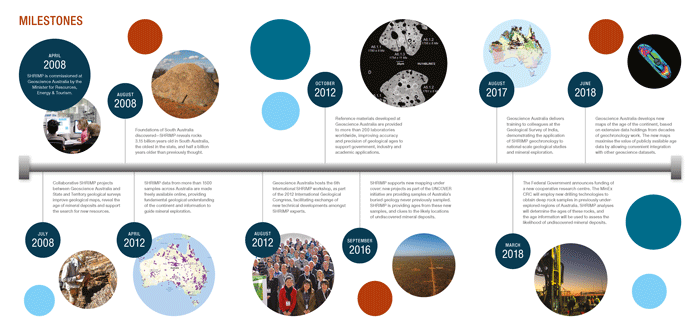News
SHRIMP time machine uncovers mineral potential
Published:29 August 2018
SHRIMP time machine uncovers mineral potential
On its 10 year anniversary, Geoscience Australia's world-renowned Sensitive High Resolution Ion Micro Probe (SHRIMP) mass spectrometer has uncovered a new age for gold bearing rocks near Tennant Creek.
On its 10 year anniversary, Geoscience Australia's world-renowned Sensitive High Resolution Ion Micro Probe (SHRIMP) mass spectrometer has uncovered a new age for gold bearing rocks near Tennant Creek.
Geoscience Australia released initial results [880KB PDF] this week that indicate some of the gold mineralisation near Tennant Creek is about 200 million years younger than previously thought. This new age indicates that other rocks in the region, previously regarded as too young, could contain mineral deposits, including gold.
Geoscience Australia's Acting Chief of Resources Division, Dr Richard Blewett, said the new discovery in Tennant Creek was exciting for future explorers, and shows that even after 10 years, the SHRIMP technology continues to reveal geological surprises.
"Since our laboratory opened in 2008, this instrument has measured over 1500 samples in collaborative projects with State and Territory geological surveys, helping us to improve geological maps and provide valuable free-access data to guide mineral exploration across the country," Dr Blewett said.
The SHRIMP is an Australian-designed and built technology that analyses tiny portions of mineral grains to determine the age of rocks and mineral deposits. This information is important to mineral and energy exploration because it provides clues to where to look for undiscovered resources.
It has played a critical role over the past decade, supporting an improved understanding of Australia's geological makeup.
"This latest discovery is just one of the exciting developments that have helped us to write and in some cases re-write the history of Australia's geology," Dr Blewett said.
"For example, in 2008, the SHRIMP revealed a group of granite rocks in South Australia were half a billion years older than previously thought, determining them to be the oldest in the State at over three billion years old.
"The geology beneath the Nullarbor Plain in South Australia is very poorly known. Earlier this year we drilled into the previously unknown basement rocks and using the SHRIMP showed that they were of similar age to rocks that host nickel and copper deposits in the north of the state.
"The SHRIMP is now a key part of our current Exploring for the Future program which is dedicated to boosting investment in resource exploration in Australia.
"We anticipate it will continue to support government, industry and academic applications for many more years."
A science article on the new result at Tennant Creek is available here:
- Identification of a new gold event at Tennant Creek expands 'search space' for more discoveries [880kb PDF]
More information about Exploring for the Future is available here: http://www.ga.gov.au/eftf/home
Contact:
Phone:
Email:





